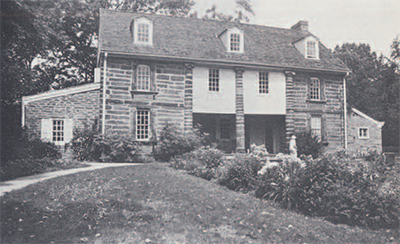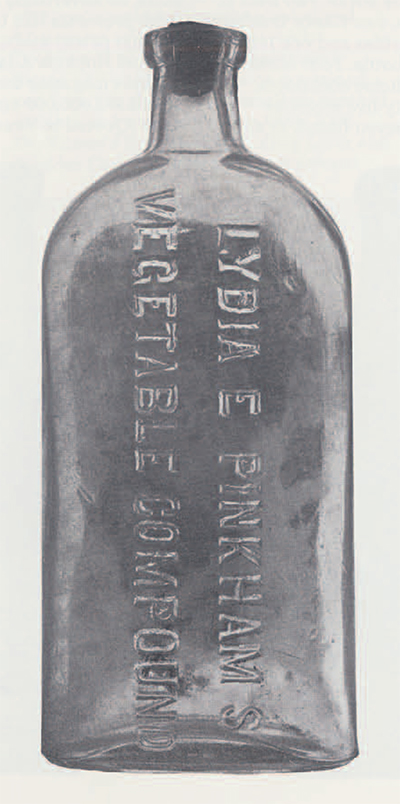
Introduction
Bartram’s Garden, located on the Schuylkill River in Southwest Philadelphia, was the home of John Bartram, the eighteenth century naturalist. Bartram’s house, a substantial masonry structure was built in 1731 as indicated by a date stone on the south end of the building. Various other structures survive on the site and comprise a large barn and three other buildings known respectively as the stable, the carriage house and the seed house. According to a descendant of John Bartram, the seed house was built by Bartram soon after he settled there in 1728 and was used to store and process the seeds and specimens he received from, and sent to, England (Cheston 1953: 23).

The Excavation
To test this statement archaeological excavations were carried out by the Museum Institute for Conservation Archaeology of the University Museum, Philadelphia in June and October of 1979. The aims of the excavation were to obtain dating evidence for the seed house structure, and to recover soil samples from eighteenth century contexts within the seed house. It was hoped that these might yield evidence of Bartram’s botanical activities in the form of pollen or preserved seeds.
A construction related feature was uncovered in an excavation unit located at the south end of the building which contained sherds of creamware. Although creamware was first manufactured in England around 1762, it is thought unlikely that it was imported before 1769 (Noel Hume 1972: 125-126). Furthermore, one of the sherds had a “Royal Pattern” rim which first appears in manufacturer’s catalogs in 1783 (Noel Hume 1972: 126). This evidence suggests that the south end of the seed house was built after 1783 and as John Bartram died in 1777 the structure could not have been used by him.
The excavation inside the southern end of the seed house sampled approximately 25% of the interior of the structure. No evidence of eighteenth century deposits was found, so the proposed botanical sampling program was not carried out. One layer of fill was found in the excavation unit which consisted of black organic soil mixed with ash and red gravelly loam. This layer was up to one foot, three inches thick and contained a comparatively large assortment of late nineteenth and early twentieth century ceramics and glass bottles. A total of eighty-seven complete or semi-complete bottles were recovered; of this total, thirty-five were identifiable from their embossed inscriptions or shape as medicine bottles. The others comprised containers for ink, liquor, perfume, salad oil, soda and root beer extract. A full report on the excavations is on file at the University Museum (Parrington 1979).
Dating
Among the other artifacts was a glass jelly jar with an embossed patent date on the base “NO. 72 PAT. IN U.S. DEC. 22. 1903. JULY 17 1906 M 7.” Other dating evidence was provided by an embossed inscription on the base of a medicine bottle “JENKS WYOMING PHARMACY 4043 MARKET ST. PHILA.” According to Philadelphia City Directories, this establishment is first listed as the Wyoming Pharmacy in 1904 although the Jenks Pharmacy was located at 4043 Market Street in 1888 (Copsills 1888 and 1904). A soda bottle with the remains of a Hutchinson-type stopper carried the embossed inscription on the front “UNIQUE BOTTLING CO 643 PIERCE ST PHILA. PA. REGISTERED.” This company was first listed at this address in 1904 (Copsills 1904) but doesn’t appear in City Directories after 1908.
Although some of the manufacturers identified by the embossed inscriptions on their bottles are still in existence (i.e., Heinz and Hires) many of them no longer appear in directories after the first decade of the twentieth century. As bottles have a comparatively short life span as containers and are then normally discarded, it seems safe to assume that the bottles from Bartram’s were thrown out as trash shortly after they were made. The jelly jar with its patent registration date of July 17, 1908 provides a more exact terminus post quern or earliest possible date for the deposition of the group of bottles than is usual on most archaeological sites. The Jenks Wyoming Pharmacy bottle must have been made after 1904 when the pharmacy appears to have changed its name, and the Unique Bottling Company soda bottle must have been made between 1904 and 1908 according to the City Directories. This evidence, together with the fact that many of the manufacturers went out of business in the first decade of the twentieth century, strongly suggests that the group of bottles was discarded between 1906 and 1910.
Discussion
Because of its historical significance, Bartram’s Garden was bought by the City in 1891 and became a City Park (Cheston 1953: 24). Over the next thirty years the City carried out restoration work and it seems likely that this included clearing trash from some of the buildings and dumping it below the floor of the seed house. The catalog of the medicine bottles found in the seed house comprises seven Dr. D. Jayne’s Expectorant bottles, six Lydia E. Pinkham’s Vegetable Compound bottles, six Munyon’s Paw-Paw bottles, three Bromo-Seltzer bottles, two Ozomulsion bottles, one Hankin’s Specific bottle, one Dr. Kilmer’s Swamp Root Kidney Liver and Bladder Cure bottle, two Geo. E. Dahis druggist bottles, two Hance Brothers and White druggist bottles and one Jenks Wyoming Pharmacy bottle. Four unmarked bottles were also medicine containers, making a total of thirty-five medicine bottles out of eighty-seven found, or a little over forty percent.
This percentage seems high enough to indicate a preoccupation with proprietary medicines among the people living at Bartram’s in the first decade of the twentieth century. This preoccupation was the culmination of centuries of inadequate medical treatment in America. In the face of such conventional treatments as bleeding, cupping, blistering and purging, the sick, or those who merely thought they were sick, turned to the nostrums and cure-alls of the patent medicine manufacturers. Patent medicines were widely advertised with copy which disparaged doctors and made claims to cure every ailment and condition. Perhaps the most famous proprietary medicine manufacturer, the Lydia E. Pinkham Company, was spending $100,000 a year on advertising in the 1880s, and in 1900, in an attempt to reverse a drop in sales, the company spent $770,250, or sixty-three percent of gross sales, on advertising (Stage 1979: 99, 140). With pressures like these it is not surprising that patent medicine sales boomed and Samuel Hopkins Adams could claim in Colliers magazine that America would spend $75,000,000 on useless medicines in 1905 (Quoted in Young 1967: 31).
In the absence of adequate medical treatment it could be claimed that patent medicines filled a need, but many of them contained ingredients that were positively harmful, such as cocaine, opium and heroin. In excavations carried out by MICA at Independence National Historical Park in Philadelphia in 1979 two fragments of bottles which once contained Swaim’s Panacea were found (Parrington and Schenck 1979: 78-79). This nostrum was said to cure a large number of ailments, including mercurial poisoning despite the fact that the ingredients included mercury; the other ingredients were water, sarsaparilla, alcohol and oil of wintergreen, which may have improved the taste somewhat (Young 1961: 58-66).
The proprietary medicines found at Bartram’s originally contained ingredients which would have had less drastic results on the human constitution. An analysis of Lydia Pinkham’s Vegetable Compound carried out in 1913 showed that the medicine contained 19.3 percent alcohol and 0.6 percent solid substances which “possessed no distinctive characters” (Stage 1979: 183). Ozomulsion contained cod liver oil, glycerin and small amounts of calcium and sodium (Cramp 1921: 100). Dr. Kilmer’s Swamp Root Kidney Liver and Bladder Cure contained about 9 percent alcohol, sugar, water, flavoring and small amounts of swamproot and field herbs (Cramp 1921: 207). Many of the nineteenth and twentieth century proprietary medicines contained large proportions of alcohol, and any cures effected by them were short lived and due to the temporary effects of the alcohol or other drugs in the medicine.
Judging by the claims made by the various manufacturers, the poor souls who discarded the patent medicine bottles at Bartram’s suffered from a wide variety of complaints. Lydia Pinkham’s Vegetable Compound was initially promoted as a cure for ‘female complaints’ and for kidney ailments in either sex (Stage 1979: 92). By the 1920s government regulations forced the company to modify their claims and new labels were put on the bottles; these claimed that the medicine was “Recommended as a Vegetable Tonic in conditions for which this preparation is Adapted” (Stage 1979: 198]. Doctor Jayne’s Expectorant was sold as a cure for respiratory diseases (Wilson and Wilson 1971: 47, 122). Doctor Kilmer’s Swamp Root Kidney Liver and Bladder Cure was very popular, and enabled the proprietors to build a five-story factory with an automated bottling line capable of turning out 2,000 bottles an hour to meet the demand (Wilson and Wilson 1971: 124).
Ozomulsion was claimed to cure “Consumption, Coughs, Colds, Whooping Cough, Bronchial Affections, Asthma, La Grippe, Pneumonia, and all Pulmonary Diseases, also for Scrofula, All Blood Disorders, Chronic Catarrh, Nervous and General Debility, Sleeplessness, Night Sweats, Fevers, Rickets or Softening of Bones in Children, Anaemia or thin blood, Loss of Flesh, and all Conditions of Wasting” (Cramp 1921: 99) and was obviously very handy stuff to have around. Bromo-Seltzer was for mental exhaustion, headache and brain fatigue and Munyon’s Paw-Paw was a nerve, heart and stomach tonic and also cured dyspepsia and acted as a laxative (Devner 1968: 17, 66). Hankin’s Specific had the conditions which it cured embossed on the sides of the bottle—rheumatism, gout and lumbago.
Not surprisingly, in view of the money and expertise expended in advertising and merchandising these remedies, they gained a wide circulation throughout the United States. Ozomulsion, Lydia Pinkham’s Vegetable Compound, Doctor Kilmer’s Swamp Root Kidney Liver and Bladder Cure, and Doctor Jayne’s Expectorant have all been found in nineteenth century mining camps in the West (Toulouse 1970: 64-65), and the myriad varieties of cure-alls, nostrums and panaceas are common components of most nineteenth and early twentieth century archaeological sites. Despite the passing of the Pure Food and Drug Act in 1906, which was designed to inhibit the growth of the patent medicine industry, many of the companies continued to prosper. Between 1902 and 1912, dates which straddle the suggested dates for the deposition of the Bartram’s Garden bottles, production of patent medicines in the United States increased by sixty percent (Stage 1979: 181); predictably, the popularity of many of the proprietary medicines incurred polemical attacks from Arthur J. Cramp, Director of the Propaganda Department of the American Medical Association, into the 1920s.
The excavations added nothing to our knowledge of John Bartram’s botanical activities but they do illustrate a not uncommon archaeological situation in which, although the hoped-for results are not obtained, other interesting information comes to light. In this case a fascinating insight into an aspect of the nineteenth and early twentieth century ‘mind-set’ was obtained. From the standpoint of the 1980s it is easy to poke fun at the superstitions and medical ignorance of earlier generations and hard to believe that our not so distant ancestors were so gullible as to accept all the wild and exaggerated claims made by patent medicine proprietors. Nevertheless, the archaeological and historical evidence demonstrates how immensely popular patent medicines were in the nineteenth and early twentieth centuries. In different forms and with different names, patent medicines continue in popularity today although the advertising may be more sophisticated and less blatant than in former years. The inheritors of the nineteenth century proprietary medicine tradition continue to make large fortunes and their advertising agents continue to show that what was true in the nineteenth century is still true today, that most people will believe what they want to believe.
